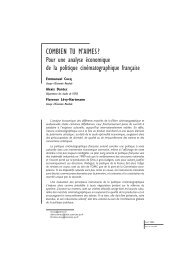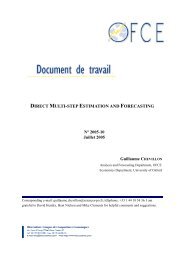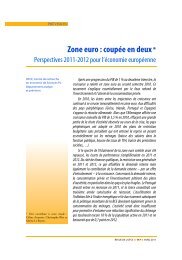N° 2005-09 Juin 2005 Guillaume Daudin* Jean-Luc Gaffard ...
N° 2005-09 Juin 2005 Guillaume Daudin* Jean-Luc Gaffard ...
N° 2005-09 Juin 2005 Guillaume Daudin* Jean-Luc Gaffard ...
Create successful ePaper yourself
Turn your PDF publications into a flip-book with our unique Google optimized e-Paper software.
<strong>Guillaume</strong> Daudin and Sandrine Levasseurdiscuss and provide some empirical insights on the subject. First, we propose data on joblosses in industrial sectors, corrected by temporary employment (interim) and domesticoutsourcing. Second, we draw a review of empirical studies measuring the effects ofinternational openness (including international relocations) on French employment.Part 1: Development of industrial French employment over 1970-20021.1.What sectors are suspected of having suffered from international relocations?Three types of development are needed to isolate the sectors that might have sufferedfrom international relocations: for a given sector, imports and the trade deficit must growfaster than domestic demand while its share in the total employment must decrease. In theINSEE classification, five sectors correspond to that description from 1978 to 2002: clothingand leather products, fuel production, household equipment, electric and electronicequipment, and textile 6 . Leaving aside fuel production, the rise of imports in these “unskilledlabour intensive sectors from developing countries is impressive, as can be seen in figure 3.Figure 1: French manufactured imports from ‘emerging industrial’ countries as a percentageof French GDP3,02,52,0Tunisie et MarocTurquie, Bulgarie et RoumaniePECO (UE-25)Asie émergente1,51,00,50,067 69 71 73 75 77 79 81 83 85 87 89 91 93 95 97 99 016 Drumetz (2004).7








